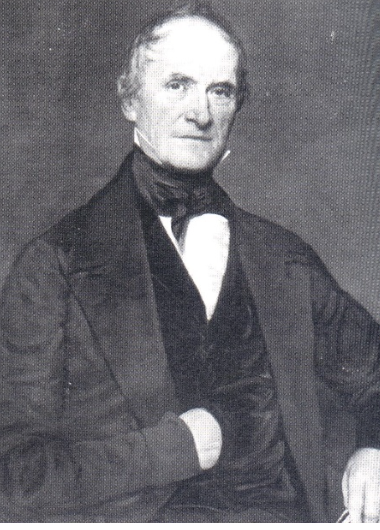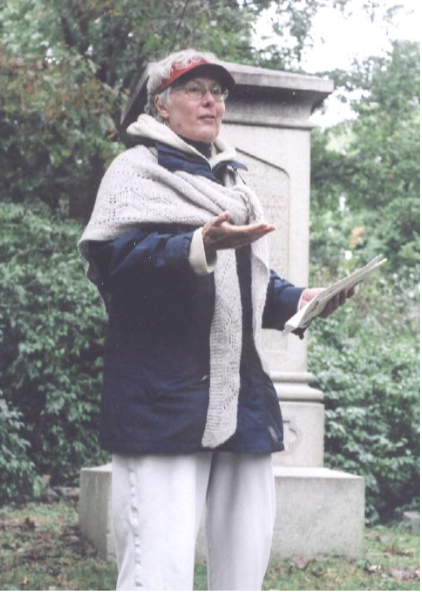
The following story is part of a series on local history provided by the Historical Society of Watertown. It was written by former Historical Society Vice-President, the late Pam Pinsky for the July 2006 Historical Society newsletter, “The Town Crier”.
MOUNT AUBURN NOTABLES
In celebration of the 375 th anniversary of the founding of Watertown, the Friends of Mount Auburn Cemetery and the Historical Society of Watertown joined together on Oct. 9, 2005 to give a guided tour of the gravesites of several notable people who once resided in Watertown.
The lives of our Watertown notables were recalled by members of the Historical Society Council and Historical Society volunteers. The following information was presented by Pam Pinsky. Pam has been a member of the Historical Society for several years and has recently been voted onto the Council. She has led several historic walks for the Historical Society and WalkBoston, a pedestrian advocacy organization.
SETH BEMIS (1775-1852)
About one mile upriver from Galen Street is Bridge Street, which of course crosses the Charles River. Look at the river upstream toward Waltham and you will see that the river is very narrow and looks as if there may have once been a dam. This is the Bemis Dam, built in 1778 by David Bemis and Enos Sumner, to power the first paper mill on the Charles. By the time David died in 1790, he owned snuff and gristmills in Watertown, as well as a paper mill on the Newton side of the river. His estate was divided among his three sons: Isaac (who died 4 years later), Luke and Seth. It was Seth, entrepreneur and inventor, who was responsible for many innovations of the next 50 years.
Seth graduated from Harvard in 1795 and worked as a lawyer for a brief time. However, the lure of the burgeoning industrial revolution enticed him to leave law and work on developing the mill in Watertown. For the next few years he experimented in the production of chocolate (this eventually became the Walter Baker Chocolate Co. of Dorchester – now a historic land mark) and the processing of dyewoods and medicinal roots. Seth also invented a machine that picked over cotton to remove seeds and other impurities. This had been done by hand up to this point. This machine was very similar to Eli Whitney’s cotton gin which had not been properly patented, resulting in many similar machines.

Seth was quick to take advantage of political situations: in 1807, quarrels with England caused England to cut off the importation of sailcloth to America. Winslow Lewis, a Boston merchant, asked Seth to produce sailcloth, and he, Lewis, would market it. About 6 months later, the cotton mill was successful and furnished the sails for the USS Constitution (old Ironsides) when it was being repaired.
On both sides of the river were little settlement houses for the mill workers. These were called Tin Horns because every morning at 5 a.m. in the summer and 7 a.m. in the winter a horn called the workers to work; the horn also called them to breakfast and to lunch. In 1812, Seth produced a short-lived first: he was able to extract gas from coal and used this gas to light his Watertown factory. However, because the gas went through tin pipes, it leaked and was very dangerous.
In 1821, he bought the paper mill on the Newton side of the river from his brother Luke. Soon after he built one of only two dams anywhere in the world; this was called a rolling stone-dam. No one is too sure how it worked, but it seems that the height of the dam was controlled by a mechanically operated drum that rolled up and down the inclined face of the stone dam. However, it caused the river in Waltham to back up, impeding the operation of the waterwheels at the mills there. The Boston Manufacturing Co. in Waltham paid Seth $12,000 to reduce the height of his dam by one foot.
Seth continued to operate the mills on both sides of the river until 1848 when his son Seth Jr. took over the management of all the mills. During the next 10-12 years, the mills were sold to William Freeman, and in 1862 Freeman was one of the principles that incorporated Aetna Mills. (Aetna Mills, built in 1919, has been beautifully restored and is on the corner of Bridge Street & Pleasant Street. It is currently the home of Boston Scientific.) [Note: Boston Scientific is no longer located at the building, which is now known as Riverworks].
The dam, one of the oldest on the river, is under the care and control of the Department of Conservation and Recreation. It breached in 1940s, and in 1974 the DCR (formerly the MDC) decided not to rebuild it so that it provided a passage for fish. Much of the old dam still exists on the Newton side of the river
Pam is very much missed by the volunteers at Mount Auburn.